Yoga Poses for Hemorrhoid Relief
Select a pose below to learn its benefits and how it helps with hemorrhoid relief.
Child's Pose (Balasana)
BeginnerGently compresses the abdomen, encouraging venous return from the lower pelvis.
Squat Pose (Malasana)
IntermediateOpens the hips and lowers intra-abdominal pressure, easing strain on rectal veins.
Bridge Pose (Setu Bandhasana)
IntermediateLifts the hips, engages the glutes, and activates the pelvic floor.
Supine Twist (Supta Matsyendrasana)
BeginnerRelieves tension along the lower back and encourages fluid movement through the abdominal cavity.
Legs-Up-the-Wall (Viparita Karani)
BeginnerPromotes venous drainage from the pelvis back toward the heart, reducing swelling.
Cat-Cow Flow (Marjaryasana-Bitilasana)
BeginnerRepeats flexion and extension of the spine to massage abdominal organs and improve circulation.
Discover how Yoga for hemorrhoids can ease discomfort and keep you moving. If you’ve ever dealt with itching, swelling, or pain during a bathroom break, you know how quickly these symptoms can disrupt daily life. The good news? A regular yoga practice targets the root causes-poor circulation, weak pelvic floor muscles, and chronic stress-while offering a gentle, drug‑free way to find relief and even prevent future flare‑ups.
Understanding Hemorrhoids
When you hear the word “hemorrhoids,” you probably picture swollen veins around the anus that cause bleeding and pain. Hemorrhoids are enlarged vascular cushions in the rectal area that become inflamed due to pressure, straining, or prolonged sitting. They’re classified as internal (inside the rectum) or external (under the skin). Common triggers include low‑fiber diets, dehydration, long periods on the toilet, and chronic constipation. While over‑the‑counter creams can soothe symptoms, they rarely address the underlying muscle weakness and circulation issues that fuel recurring problems.
Why Yoga Works: The Physiology Behind the Practice
Yoga isn’t just a series of stretches; it’s a holistic system that influences several body systems at once. Here’s how the core elements line up with hemorrhoid relief:
- Pelvic floor muscles are a sling of muscle fibers that support the rectum, bladder, and reproductive organs. Strengthening them improves tone, reduces straining, and helps keep blood flowing smoothly.
- Blood circulation is the movement of blood through vessels, delivering oxygen and removing waste. Gentle inversions and forward bends encourage venous return from the pelvic region, decreasing pooling that can inflame hemorrhoidal tissue.
- Stress reduction is the lowering of cortisol and sympathetic nervous activity through relaxation techniques. Lower stress means fewer gut spasms and less chronic constipation, two big contributors to hemorrhoid flare‑ups.
- Pranayama, or mindful breathing, activates the parasympathetic nervous system, promoting smoother bowel movements and reducing the urge to strain.
When you combine these effects, yoga creates an internal environment where hemorrhoids have less chance to become painful or bleed.
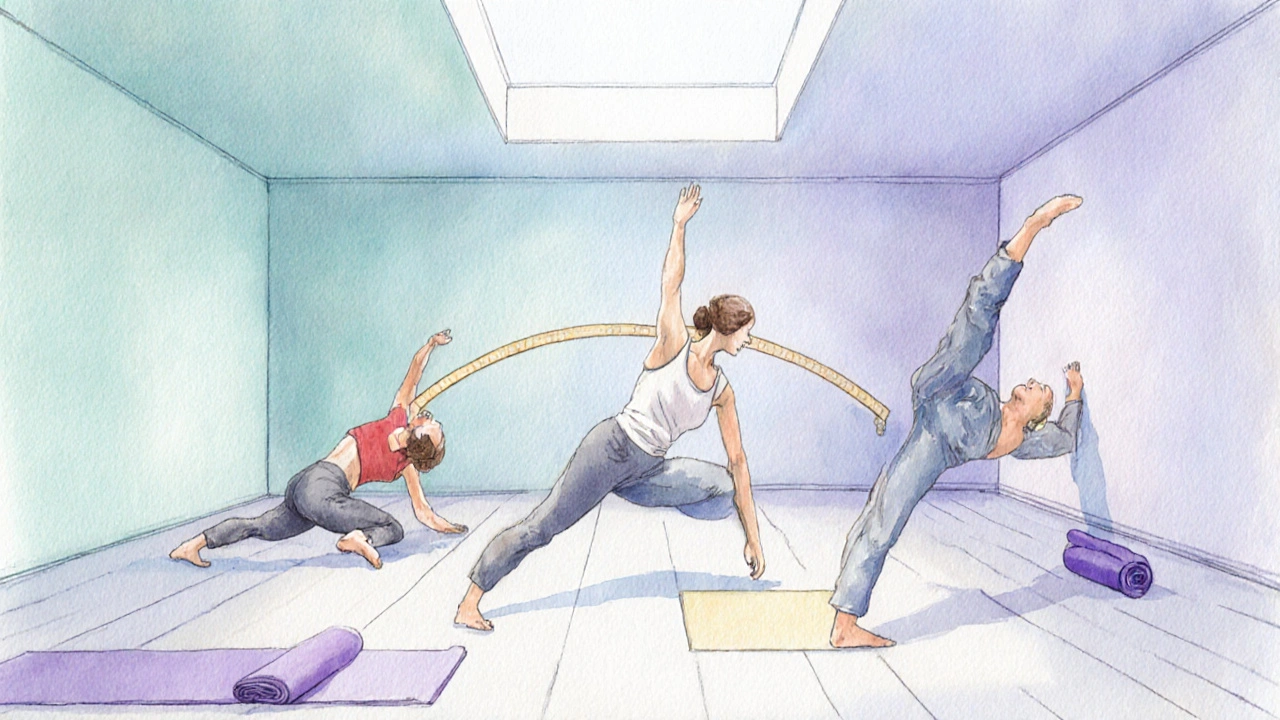
Top Yoga Poses for Immediate Relief
Below are six poses that specifically target the pelvic floor, improve circulation, and calm the nervous system. Hold each for 30‑60 seconds, breathing deeply throughout.
- Child’s Pose (Balasana) is a resting forward bend that gently compresses the abdomen, encouraging venous return from the lower pelvis. Kneel, sit back on the heels, and stretch the arms forward.
- Squat Pose (Malasana): A deep squat opens the hips and lowers intra‑abdominal pressure, which eases strain on rectal veins. Keep heels on the floor; use a block if needed.
- Bridge Pose (Setu Bandhasana): Lifts the hips, engages the glutes, and activates the pelvic floor. Press the feet into the mat and draw the belly inward.
- Supine Twist (Supta Matsyendrasana): Relieves tension along the lower back and encourages fluid movement through the abdominal cavity.
- Legs‑Up‑the‑Wall (Viparita Karani): A semi‑inversion that promotes venous drainage from the pelvis back toward the heart, reducing swelling.
- Cat‑Cow Flow (Marjaryasana‑Bitilasana): Repeated flexion and extension of the spine massages the abdominal organs and improves overall circulation.
These moves can be done in a single 10‑minute session or woven into a longer practice. Consistency is key-aim for at least three sessions per week.
Integrating Yoga into Your Daily Routine
Finding time is often the hardest part. Here are three practical ways to slot yoga into a busy day:
- Morning wake‑up: After brushing your teeth, roll out a mat for a quick 5‑minute stretch (Child’s Pose → Cat‑Cow → Bridge). It jump‑starts circulation before breakfast.
- Lunchtime reset: If you have a break, try a seated forward fold at your desk followed by a few minutes of deep breathing. Even a short breathwork session can calm the gut.
- Evening wind‑down: Finish dinner with a short squat routine and finish in Legs‑Up‑the‑Wall while watching TV. This habit promotes blood flow before you lie down.
Pairing yoga with a high‑fiber diet, plenty of water, and regular bathroom habits creates a multi‑layered defense against hemorrhoids.
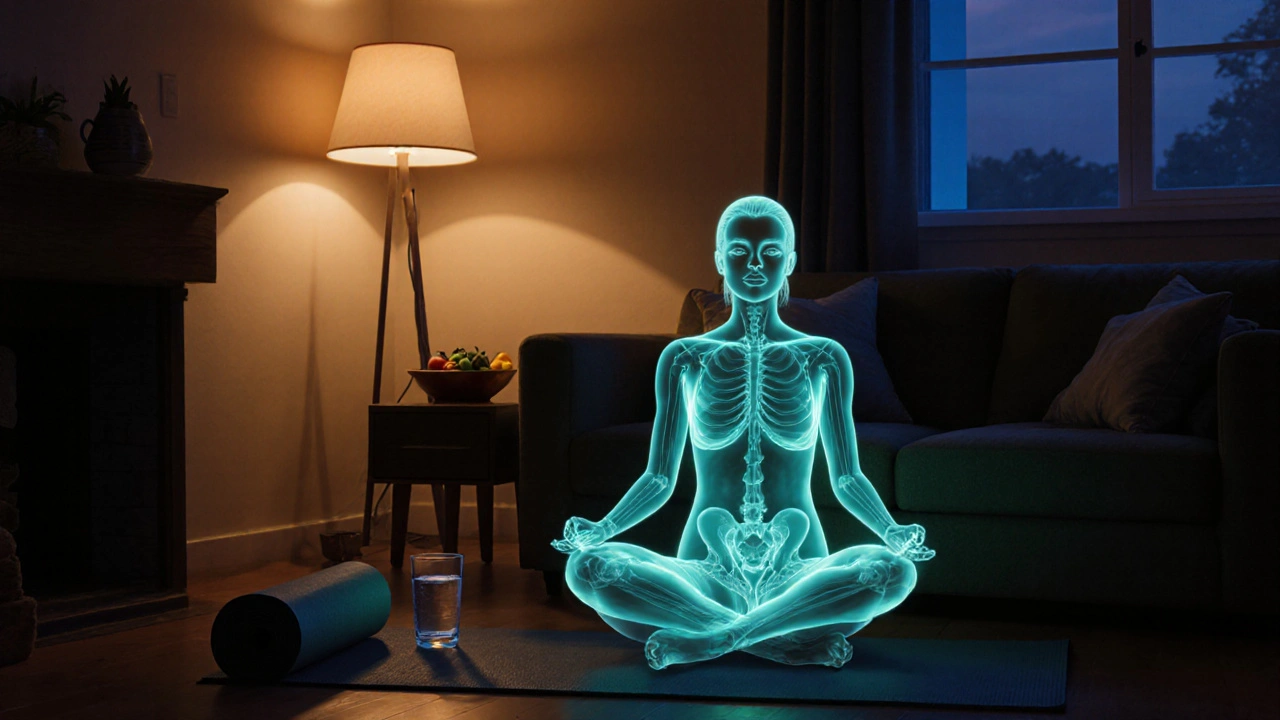
Yoga vs. Conventional Treatments: A Quick Comparison
| Aspect | Yoga | Sitz Bath | OTC Creams |
|---|---|---|---|
| Mechanism | Improves circulation, strengthens pelvic floor, reduces stress | Warm water reduces swelling and soothes irritation | Topical anti‑inflammatory agents mask pain |
| Long‑term benefit | Prevents recurrence by addressing root causes | Temporary relief, no preventive effect | Symptomatic only, no lasting improvement |
| Side effects | Minimal; possible muscle soreness if over‑done | Rare, unless water is too hot | Potential skin irritation or allergic reaction |
| Cost | Low after initial mat (free videos online) | Minimal (basin and warm water) | Varies - $5‑$20 per tube |
| Convenience | Can be done at home, office, or outdoors | Requires a bathroom or basin | Easy to apply anytime |
The table shows why many people choose yoga as a sustainable, holistic option. It’s not a cure‑all, but when combined with good hygiene and diet, it dramatically cuts the odds of a painful flare‑up.
Common Mistakes and Safety Tips
Even a gentle practice can backfire if you’re not careful. Keep these pointers in mind:
- Avoid deep forward bends with a full stomach. Digestion slows, increasing pressure on hemorrhoidal tissue.
- Don’t hold your breath. Breath-holding spikes intra‑abdominal pressure, which can worsen swelling.
- Listen to your body. Sharp pain isn’t a “stretch.” Stop, adjust, or choose a milder variation.
- Start slow. Begin with the restorative poses listed above before attempting more vigorous flows.
- Maintain proper hygiene. Keep the mat clean; sweat can irritate the perianal skin.
When in doubt, consult a physiotherapist or a qualified yoga instructor who has experience with pelvic floor health.
Frequently Asked Questions
Can yoga cure existing hemorrhoids?
Yoga can greatly reduce symptoms and speed up healing by improving blood flow and easing constipation, but it’s not a medical cure. For severe cases, a doctor’s evaluation is still recommended.
How often should I practice yoga for hemorrhoid prevention?
Three to four short sessions per week (10‑15 minutes each) are enough to keep the pelvic floor strong and circulation optimal. Consistency beats intensity.
Are there any poses I should avoid?
Deep twists or intense inversions that increase abdominal pressure can aggravate hemorrhoids. Stick to gentle forward bends, bridges, and supported poses until the area is fully healed.
Do I need special equipment?
A non‑slip yoga mat and a yoga block or folded blanket for support are sufficient. Props help keep the spine neutral and reduce strain.
Can I combine yoga with other treatments?
Absolutely. Yoga works well alongside sitz baths, a high‑fiber diet, and doctor‑prescribed medication. Just avoid applying topical creams immediately before a sweaty yoga session, as it can cause skin irritation.
By integrating these simple poses and habits into your day, you’ll likely notice less itching, reduced swelling, and smoother bathroom trips-all without relying solely on meds. Give your body the movement it craves, and let yoga be your gentle ally against hemorrhoids.

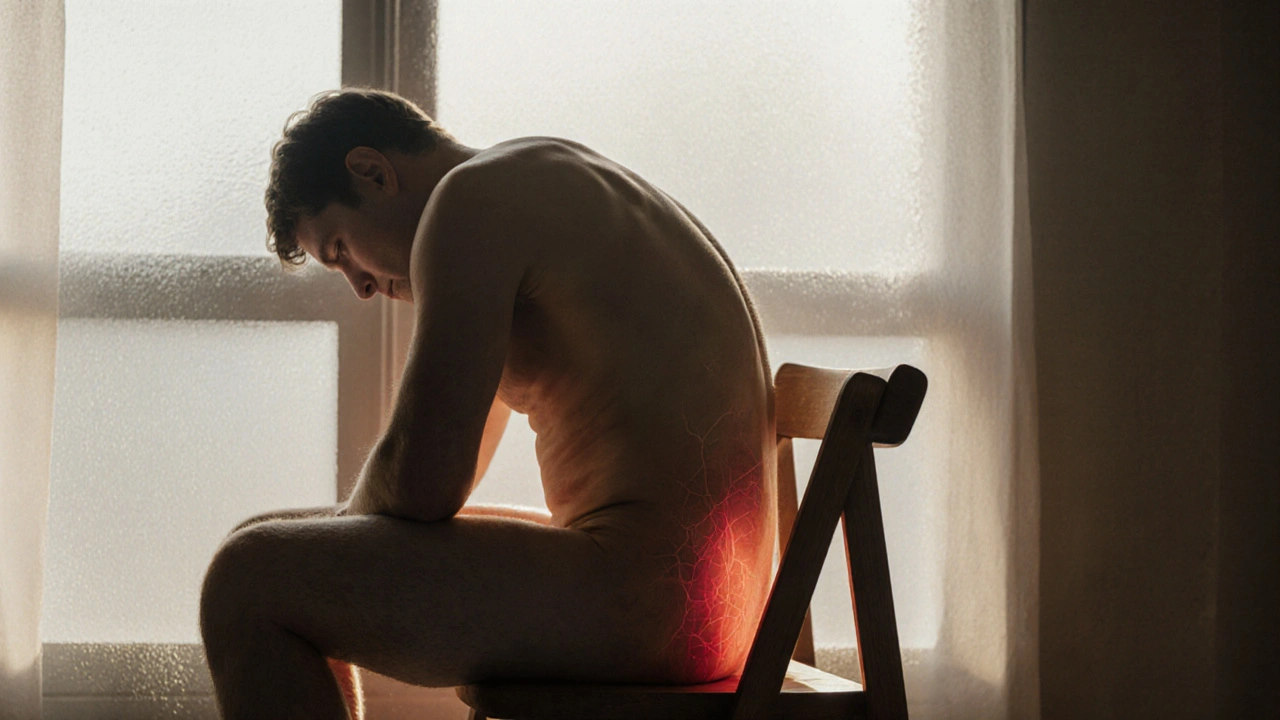
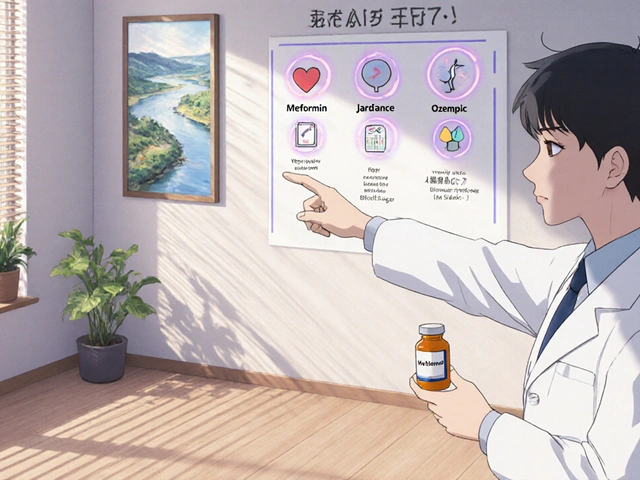
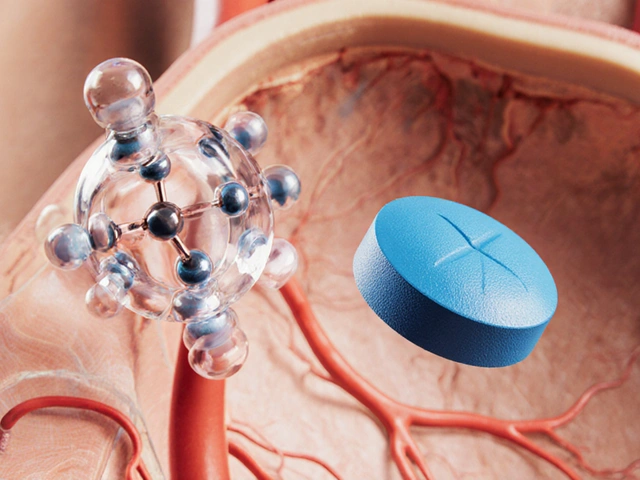

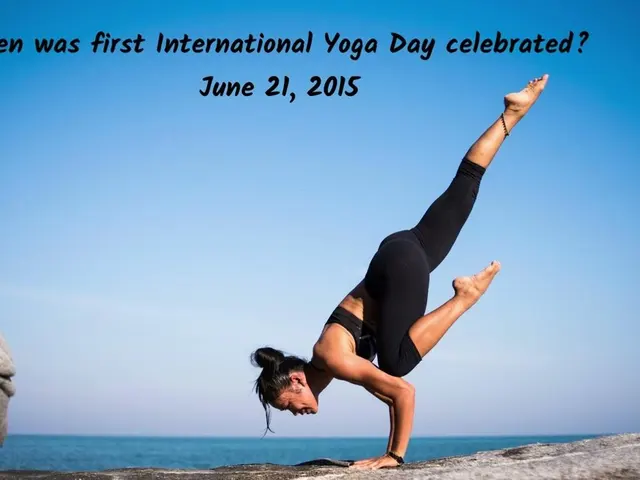

10 Comments
Yoga truly offers a low‑impact avenue to bolster pelvic floor strength, which can directly alleviate hemorrhoid discomfort. By integrating poses like Child's Pose and Bridge, you encourage venous return without straining the area. Consistency, even a few minutes a day, makes a noticeable difference.
Jump into a short routine after waking up-Child’s Pose then Cat‑Cow Flow straight into a gentle Bridge and you’ll feel blood moving away from the pelvis it’s simple stay consistent and you’ll notice less swelling and itching over time
Honestly, if you keep ignoring proper diet and hydration, yoga alone won’t magically cure a serious hemorrhoid flare‑up.
While some may tout quick fixes, the truth remains, gentle inversions, deep squats, and sustained breathwork, all under proper guidance, are essential for lasting relief; shortcuts simply postpone the inevitable.
Try adding a yoga block under your sit‑bones in Bridge to keep the spine neutral and avoid over‑extending the lower back; it helps the pelvic floor engage without unnecessary pressure.
Picture this: you’re lounging after work, legs up the wall, a calming breath, and the subtle shift of fluid away from the hemorrhoidal tissue-this isn’t a myth, it’s physiology in action; keep the pose for a minute or two and feel the swell recede; make it a habit and your body will thank you.
When you combine mindful breath with these poses, you’re essentially resetting your autonomic nervous system 😊. A calm mind means a relaxed gut, which translates to smoother bowel movements and less straining.
Remember to keep the mat clean; sweat can irritate the perianal skin.
To the discerning practitioner, note the importance of maintaining a neutral spine during Bridge; excessive lumbar arching may inadvertently increase intra‑abdominal pressure, thereby counteracting the intended therapeutic effect; therefore, engage the core gently and allow the glutes to shoulder the lift.
Seriously, if you’re not willing to sit on the floor for a few minutes, you might as well keep suffering; there’s nothing mystical about “just wait for it to heal”-movement is medicine.
Write a comment